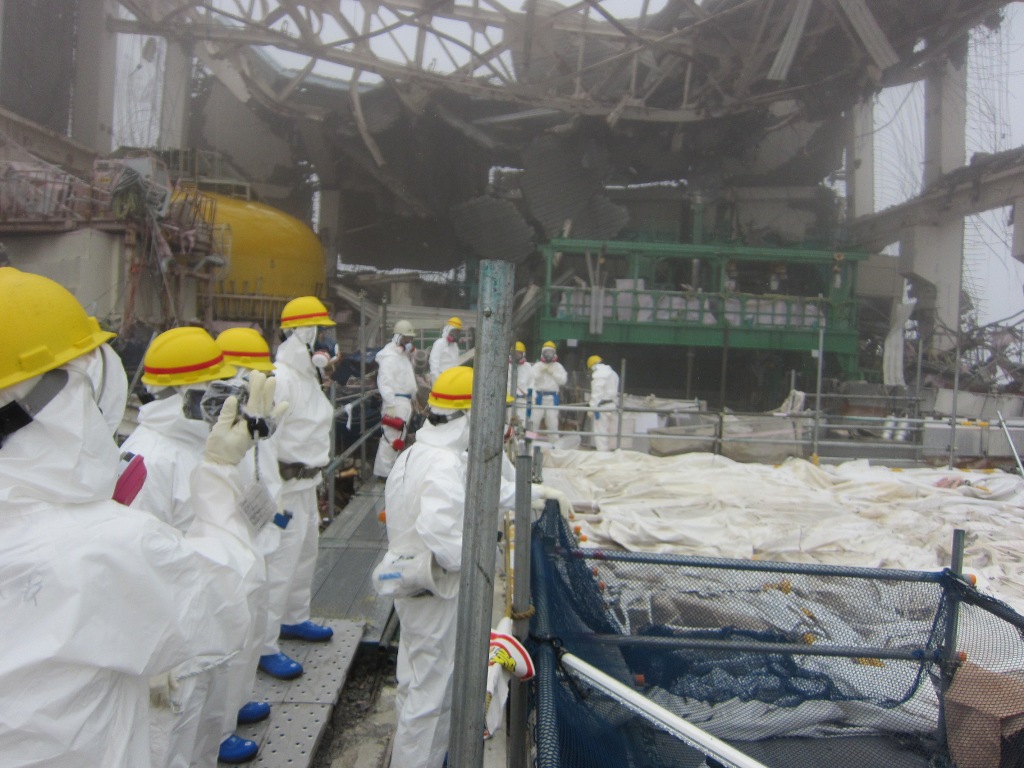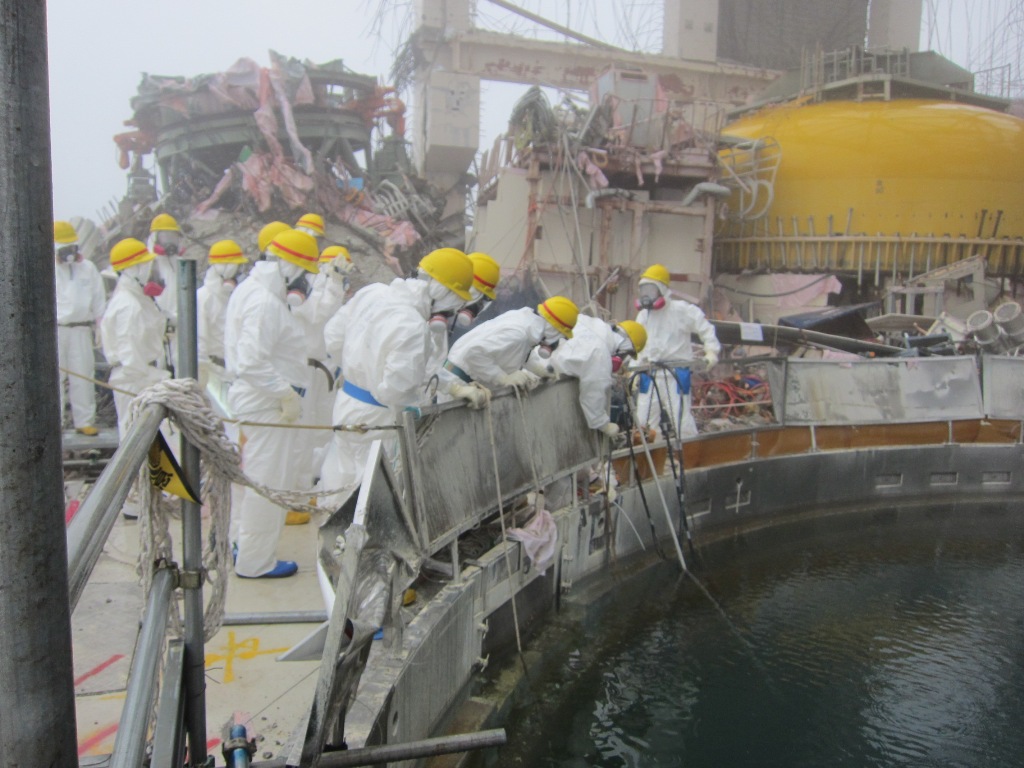(Update at the bottom)
This is the copy of the printed version of Fukushima Minpo on April 25, 2012, a local newspaper in Fukushima:
The reporter signs off as "Kyodo News", but reading the postscript part of the article it is clear that this is the original Fukushima Minpo article. It was probably fed to Kyodo News, as Fukushima Minpo is a member of Kyodo News.
What does it say?
The series title in the upper right corner: "New Happiness in Japan - Measure"
The article title in the middle: "Think what "food safety" means"
The subtitle of the article: "Cesium beef offered at an event"
From this information, if you conjure up the image of the gist of the article as "OK, the happiness in Japan in post-Fukushima is to gladly eat beef known to contain radioactive cesium to help producers as long as it is measured and disclosed properly, and that's food safety", I'll give you an A.
Quick translation (main article only, subject to revision later, maybe):
It was quiet in the office district on Sunday. It was March 11 afternoon, one year anniversary of the disaster. Couples with children, middle-aged men in jeans were entering a 12-story public building off the busy streets in Shinjuku, Tokyo.
On the tables in the kitchen that is used for cooking classes were the plates with hamburgers just cooked. Mitsuhiro Anada (age 40) told the people in the kitchen, "These contain 6 becquerels/kg [of radioactive cesium]. Please let me know if you don't want to eat them. We have also prepared cesium-free ones." About 30 people then sat at the table and started to eat.
Mr. Anada is the head of "Mo-ton Family", a meat processing company located in the northern Iwate. The event, "Let's eat cesium beef" came about after calling the customers who buy ham, hamburger meat and sausages from his company by mail order.
The main dishes are the hamburgers and beef stew made from the beef that had been detected with radioactive cesium. Both dishes tested far below the provisional safety limit (500 becquerels/kg [it was still the provisional safety limit in March this year]).
"I wanted the consumers to think about what "food safety" means, by showing the number [of radioactive cesium measurement] and having them eat [the meat]", said Anada when asked why he held this event.
Mr. Anada and his wife have run the company. They have avoided the beef from cattle fed with imported feed, and insisted on Iwate beef from free-grazing cattle. "Free-grazing cattle are safer, and the meat has richer taste." He made ham, and hamburgers without using chemical additives.
But he received a call late September last year from a cattle farmer that he had dealings with. "Radioactive cesium has been detected from the beef. It's below the provisional safety limit, but what do you want to do?"
In Iwate Prefecture, the shipment of beef was halted throughout the prefecture after radioactive cesium exceeding the provisional safety limit was found in the beef produced in the prefecture. After the shipment was resumed, the prefectural government started to conduct more thorough testing on shipment. Levels of cesium were non detectable in most beef, but the beef that Anada was planning to buy was found with cesium.
Maybe it was the grass in the mountains that they ate. Sure enough, the grass was found with radioactive cesium. "My insistence on natural beef turned against me", said Anada. If he doesn't buy, this beef would be sold at a huge discount, distressing the cattle farmer with whom he had a long-standing relationship.
Starting September, he bought the beef from three cows at a regular price. He sent the samples of the meat to a testing laboratory. The result was 10 to 60 becquerels/kg of radioactive cesium.
"I wonder if my customers still buy." The freezer in Anada's factory was filled with boxes containing this beef.
Thus ends the first installment of the series "New Happiness in Japan". It is hard not to guess what the next installments will be like. They will probably describe Anada's difficult decision to hold the event to educate the consumers, and grateful consumers who brought their own children to the event to learn what it means to be "safe" in the post-Fukushima Japan. And they lived happy ever after, the producer and the consumer, radioactive cesium or not.
Something like that.
Many Japanese people in Japan are shaking their heads in disbelief on learning about this event. They don't understand Mr. Anada, and they don't understand parents bringing their children to knowingly feed their children with cesium beef.
=========================
Update 4/26/2012 (H/T reader JAnonymous)
As I suspected above, the event was probably not free. The participants were probably charged 2,000 yen (US$25, 19 euro), if the Shinjuku event above was like the similar event in Iwate Prefecture.
From the flyer of the Iwate event in January this year by Mr. Anada:
セシウム牛を食べるべきではない人にもメールをお送りしていますが、セシウムフリーの食事も用意していますので、ご安心ください(笑)
I'm sending this email to people who shouldn't be eating cesium beef, but we are also preparing cesium-free meal, so be comforted. (laugh)
I have no idea what's so funny about it. Mr. Anada ends the flyer by this remark:
地域と生活を分断するグローバリズムに抵抗を!
Resist the globalism that severs the local community!
(What the ... ??)



















 Tokyo Time
Tokyo Time
![[Most Recent Quotes from www.kitco.com]](http://www.kitconet.com/charts/metals/gold/t24_au_en_usoz_2.gif)

